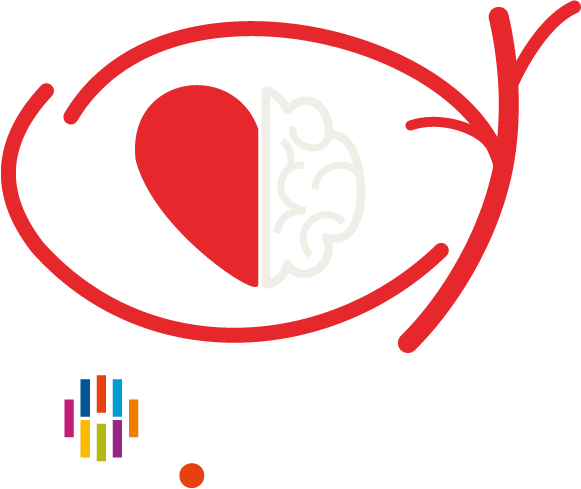Searching for new actors in unexplained thrombosis
Arterial and venous thromboses are common causes of death in the developed world. They have different pathogenesis, risk factors, clinical manifestations, and treatments but they share common pathogenic players, ie the vessel, blood flow, and blood content. Most of arterial thromboses occur on atherosclerotic plaques that develop due to the presence of cardiovascular risk factors. But in some situations atherosclerotic plaques are almost or even completely absent. In the case of venous thrombo-embolic event (VTE), the classical risk factors are stasis, chronic inflammation and hypercoagulability. But in about 50% of patients with recurrent VTE, no cause is found. Not knowing the cause of thrombosis makes it difficult to choose the duration of anti thrombotic treatment, and raises questions of which kind of treatment to prescribe.
Besides, these last months have shown the emergence of severe acute respiratory distress syndromes (ARDS) related to COVID-19, which are, at least partly, due to lung small vessels obstructions (Fox et al. 2020). Very recent work, including work from our group, is in favor of a prominent role of NETs in the pathogenesis of COVID-19 related ARDS and thromboembolic complications (Middleton et al. 2020) (Prevel et al, submitted).
Our project will assess the role of various actors in the development of unexplained thrombosis:
 Neutrophil Extracellular Traps (NETs) are extracellular networks of DNA that are emitted by polymorphonuclear cells. They have been shown to promote arterial and venous thrombosis. We recently demonstrated that patients with Myeloproliferative Neoplasms (MPN), an hematological malignancy associated with thrombotic complications, show increased levels of NETs biomarkers (Guy et al, Leukemia 2019). We are now investigating if these biomarkers could be predictive of thrombotic complications in MPN (protocol MPN Bioclot, NCT04177576).
Neutrophil Extracellular Traps (NETs) are extracellular networks of DNA that are emitted by polymorphonuclear cells. They have been shown to promote arterial and venous thrombosis. We recently demonstrated that patients with Myeloproliferative Neoplasms (MPN), an hematological malignancy associated with thrombotic complications, show increased levels of NETs biomarkers (Guy et al, Leukemia 2019). We are now investigating if these biomarkers could be predictive of thrombotic complications in MPN (protocol MPN Bioclot, NCT04177576).
Because of their prothrombotic properties, we hypothesize that NETs could also be involved in other pathological contexts such as small vessels diseases, unexplained spontaneous thrombosis, thrombosis following vascular surgery and in COVID patients.
If confirmed, NETs biomarkers would represent useful diagnostic tools for predicting thrombotic complications.
 Clonal Hematopoiesis of Indeterminate Potential or (CHIPs) are defined by the presence in the blood of hematopoietic cells that carry leukemia driver mutations in the absence of hematological malignancies. This condition has recently been associated with cardiovascular complications (myocardial infarctions, strokes, heart failure, …). Using the JAK2V617F mutation as a model, we are studying the processes involved in the development of atheroma triggered by mutated hematopoietic cells. Through the protocol CHAth (NCT04581057), we are investigating the role of CHIPs in unexplained myocardial infarction. In collaboration with Dr José J. Fuster’s group, we are also assessing the contribution of CHIPs in the development of cardiovascular events following cytotoxic treatments (CHEMICAL, ERA-CVD).
Clonal Hematopoiesis of Indeterminate Potential or (CHIPs) are defined by the presence in the blood of hematopoietic cells that carry leukemia driver mutations in the absence of hematological malignancies. This condition has recently been associated with cardiovascular complications (myocardial infarctions, strokes, heart failure, …). Using the JAK2V617F mutation as a model, we are studying the processes involved in the development of atheroma triggered by mutated hematopoietic cells. Through the protocol CHAth (NCT04581057), we are investigating the role of CHIPs in unexplained myocardial infarction. In collaboration with Dr José J. Fuster’s group, we are also assessing the contribution of CHIPs in the development of cardiovascular events following cytotoxic treatments (CHEMICAL, ERA-CVD).
Beyond the role of CHIPs in thrombosis in “large vessels”, we are interested in studying pathogenic interactions between mutated hematopoietic cells and endothelial cells that could lead to small vessels diseases.
If CHIPs prove to be an actor in these various pathological conditions, their screening would represent a key diagnostic marker and could help in guiding the therapeutic attitude.

- The 3D structure of blood clots and their physicochemical properties could represent parameters that influence their capacity to obstruct blood vessels. We hypothesize that these parameters could help in identifying qualitative and/or quantitative clot abnormalities that could be linked to unexplained thrombotic conditions. This work is performed in collaboration with Jean Marc Allain’s lab (Ecole Polytechnique), Hubert Gallinat (CHU Brest) and Francis Couturaud (CHU Brest)
